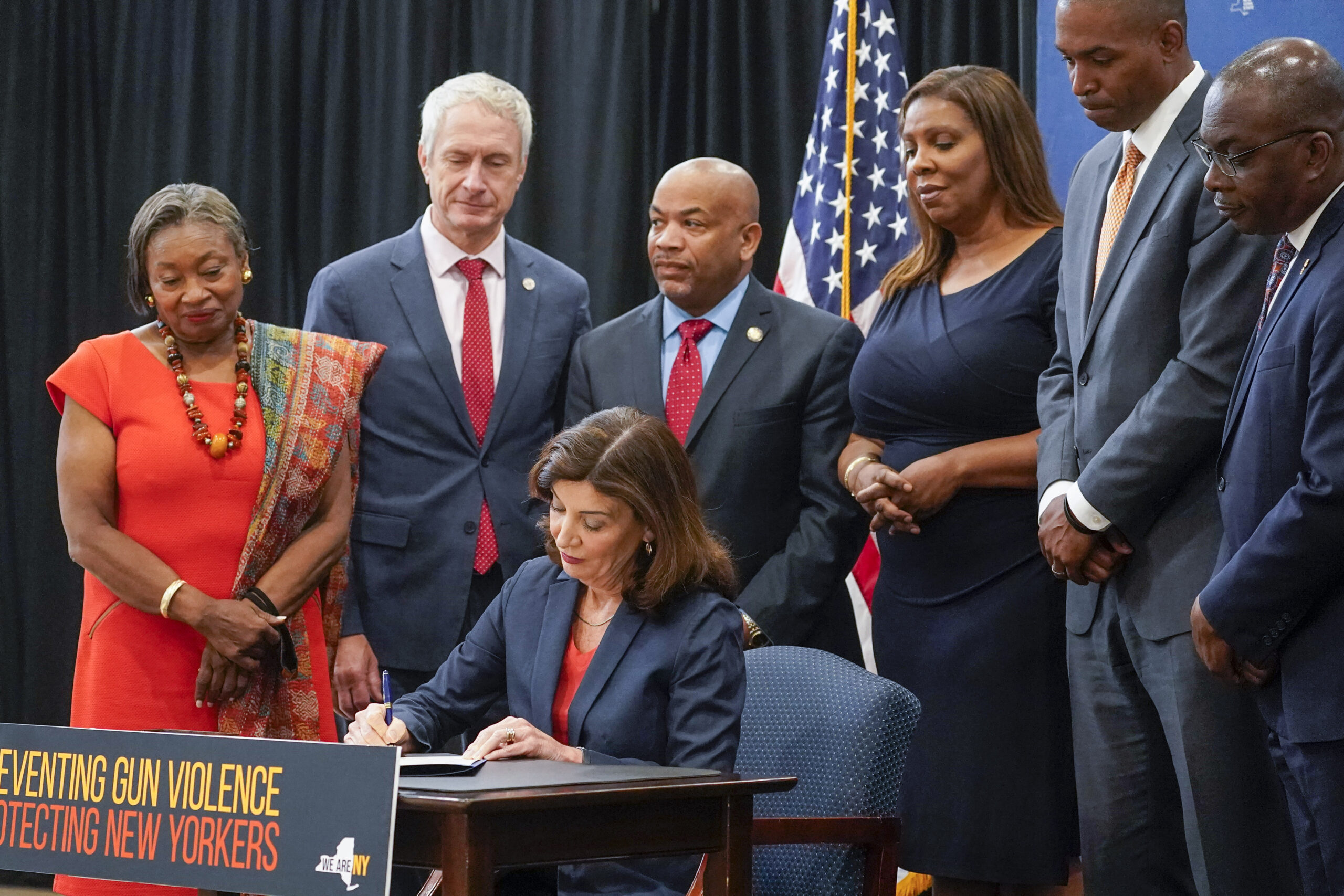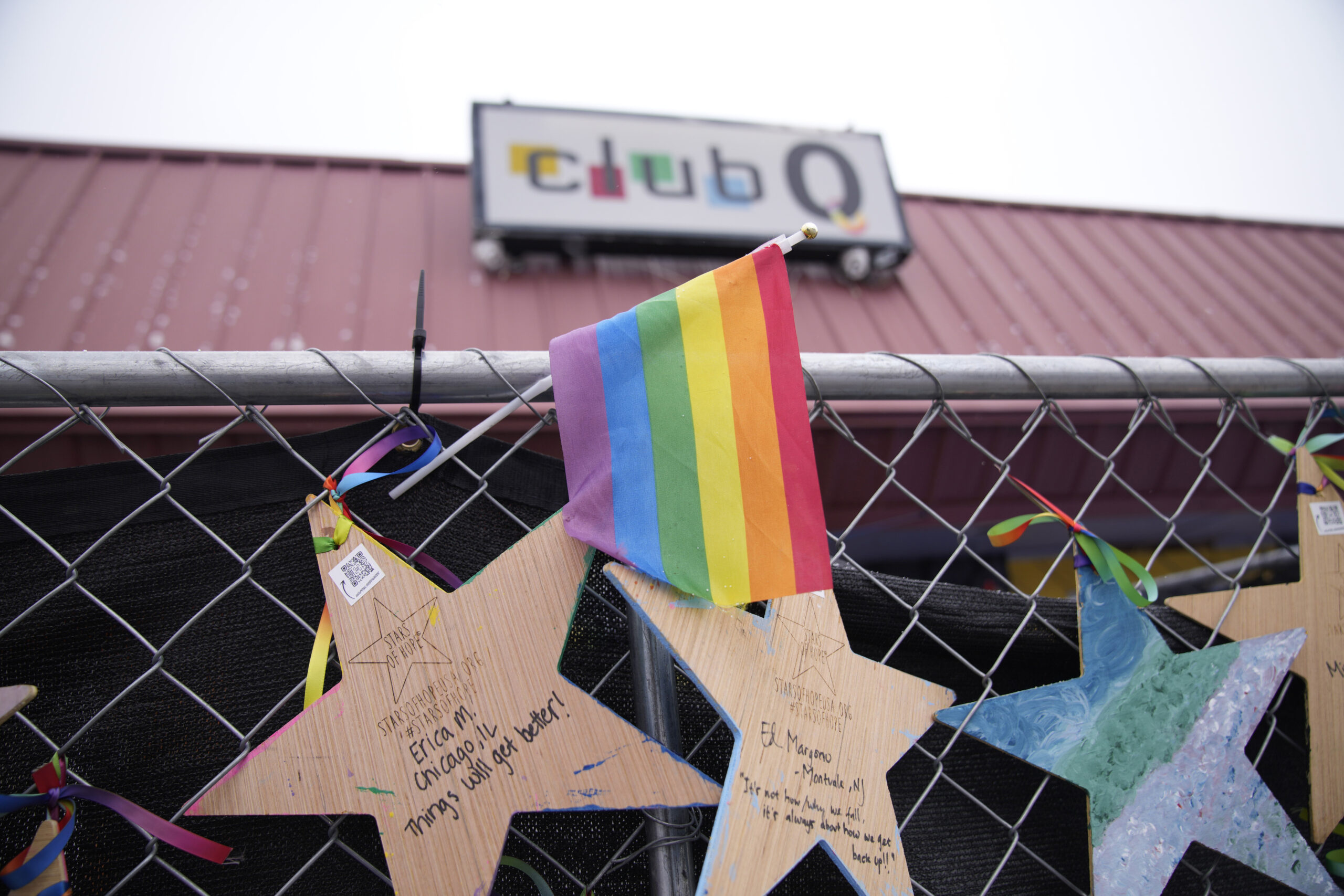It’s Hard to Implement Red Flag Laws. A New National Center Is Meant to Make It Easier.
On a March 23 visit to Parkland, Florida, Vice President Kamala Harris announced the launch of a resource hub to help make extreme risk protection order laws more effective. Here’s what we know.

Six years ago, the mass shooting at Marjory Stoneman Douglas High School in Parkland, Florida, took the lives of 14 students and three educators. The massacre transformed many survivors and victims’ family members into fierce advocates for gun reform, working to turn the tragedy into an impetus for change.
A few months later, change arrived — and on an unprecedented scale. Florida lawmakers passed the nation’s sixth “red flag” law, giving judges the authority to order that firearms be removed from people deemed to be a danger to themselves or others. It prompted a waterfall effect: Seven states followed Florida’s lead in 2018, and another four in 2019; other states have trickled in since then, too. Each law is different, but they all share a common goal: to save lives by getting guns out of the hands of people who shouldn’t have them.
Now, Extreme Risk Protection Order laws — as red flag laws are more formally known — are having another moment.
On March 23, Vice President Kamala Harris visited Parkland, and — surrounded by families who lost loved ones in the shooting — publicly launched the National ERPO Resource Center, a partnership between the federal government and Johns Hopkins University to help increase the effectiveness of these laws.
Meanwhile, she reminded the 21 states that already have ERPO laws of a pertinent fact: Hundreds of millions of dollars in federal funding is on the table to increase their use.
The National ERPO Resource Center
Unlike a gun prohibition that results from a criminal indictment or conviction, risk protection orders are not an automatic process — a lot of different people are involved in making them work.
Someone has to identify a risk and file a petition. A judge has to consider each case individually, usually more than once. Law enforcement has to carry out the order, either by seizing a gun or preventing a future purchase. The process extends all the way to the point when a gun might be legally returned to its owner after an order expires.
At each step, there’s the potential for gaps: Petitions may be hard to locate or file; a police officer may not have clear instructions on when to file one; a judge could be overloaded with cases, leading to a backlog; or law enforcement agencies may not have room to store seized weapons.
“These laws are only as good as they are implemented,” Lisa Geller, the co-director of the new National ERPO Resource Center at Johns Hopkins, told me.
One of the biggest roadblocks is public awareness. Research indicates that red flag laws can prevent tragedies, but if people at risk don’t know about them, or don’t think of them as an option, there’s no real way to start the process. Additionally, the actual systems put in place to seek and file the orders, and the people-power to carry them out, are among the most important factors in making these laws effective. As I’ve covered in The Trajectory before, differences in local leadership — even within the same state — can dramatically increase ERPO usage.
Read Next

This New York County Is Disarming Record Numbers of Potentially Dangerous People
Most of the responsibility to implement these laws falls to the individual states that enact them, but the 2022 Bipartisan Safer Communities Act allocated hundreds of millions in funding for state crisis intervention programs, including risk protection orders. That money started moving out the door of the Justice Department last year. Part of the funding, $2 million, went to Johns Hopkins for the new National ERPO Resource Center.
The center, which quietly began operating last year before its public debut in March, is what’s known as a training and technical assistance provider — essentially a hub to support state and local officials as they endeavor to make risk protection orders fit local needs, and connect stakeholders to share best practices.
In 2023, the center trained more than 1,200 judges, social workers, law enforcement officials, victims advocates, attorneys, community organizations, and health professionals who share the job of making sure that red flag laws actually work. Its newly launched website includes a range of resources for both officials and people who may need to use a risk protection order.
“Some states are pretty far along in their process,” Geller said. “Some states are not as far along in the process. And so, for those states, we want to make sure that we’re available with any questions that they have.”
Funding Is There for Red Flag Laws, If States Will Take It
The $2 million investment in the National ERPO Resource Center is a small fraction of the federal dollars to support Extreme Risk Protection Order laws — and one of the center’s functions is to help states figure out how to use the rest of that money.
Last year, the Justice Department, through the Bureau of Justice Assistance, awarded some $238 million to states, territories, and Washington, D.C., in an initial round of grants from the Safer Communities Act’s total of $750 million in crisis intervention funding.
Though the funding was originally proposed as a means of supporting and incentivizing red flag laws, it was eventually expanded to cover other types of crisis intervention during congressional negotiations. Every state can use the funding, whether they have a red flag law or not. But the 21 states with Extreme Risk Protection Order laws could use it specifically for improving them.
Read Next

Research Indicates That Red Flag Laws Work — But Only If People Know About Them
At least six states are prepared to do just that. In Illinois, for example, officials are using $9.5 million in grant funds for training, enforcement, and building out community infrastructure to handle the red flag order process. In Massachusetts, the state Department of Public Safety is using its $4.9 million in grant funds in part for public education and training in the hopes of making ERPOs more accessible. Connecticut, California, Colorado, and Washington state are the others with explicit plans to use the grant funding for ERPOs.
That leaves 15 states that could be using the funding for ERPOs but aren’t. Some — like Michigan and Minnesota — didn’t have a red flag law in place when the grant process started. Others did, but chose to use their first round of funding for different interventions, like drug courts, mental health courts, veterans courts, and diversion programs.
Some haven’t finalized their approaches. And the proposals aren’t written in stone: A state like Michigan could amend its plans for this round to include ERPOs.
It’s also not too late for the states to use the remainder of the $750 million over the next few years to make red flag orders as effective as possible. This year, the Justice Department plans to award another round of grants, up to $141 million — whether it goes to red flag laws is up to each state.
The vice president reminded the states of that in Parkland. “Part of why I’m here today is to challenge every state: Pass a red flag law,” Harris said. And of the 21 that have passed red flag laws, she challenged those that haven’t yet taken advantage of the federal dollars to do so: “Come on over. We got some resources for you.”
